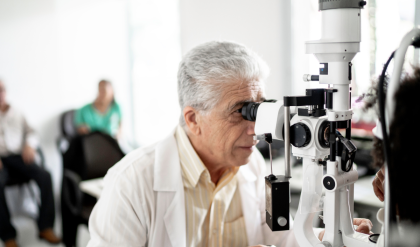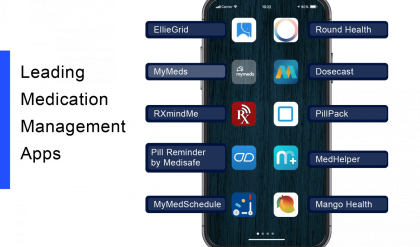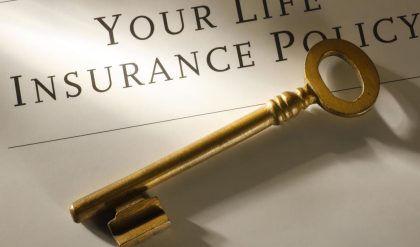Unlocking Better Sleep: A Guide to Sleep Disorder Clinics
The land of Nod. A place of blissful unconsciousness, restorative rest, and rejuvenation. For many, it’s a nightly destination. For others, it’s a frustratingly elusive mirage. If you’re struggling with sleep, you’re not alone. Millions grapple with sleep disorders, impacting their daily lives, health, and well-being. This isn’t just about feeling tired; it’s about unlocking a healthier, more vibrant you. And the key might just be a sleep disorder clinic.
This comprehensive guide explores the world of sleep disorder clinics, helping you navigate the process of seeking help, understanding what to expect, and ultimately, reclaiming your sleep.
Why Choose a Sleep Disorder Clinic?
Your primary care physician can offer initial advice and basic sleep hygiene tips, but a sleep disorder clinic offers a deeper dive. These specialized facilities are equipped to diagnose and treat a wide range of sleep disorders, providing a level of expertise unavailable elsewhere. They utilize advanced diagnostic tools and personalized treatment plans, ensuring you receive the most effective care.
What Conditions Do Sleep Disorder Clinics Treat?
Sleep disorder clinics treat a spectrum of conditions, including:
- Insomnia: Persistent difficulty falling asleep, staying asleep, or achieving restful sleep.
- Sleep Apnea: Repeated pauses in breathing during sleep, leading to fragmented rest and daytime sleepiness.
- Restless Legs Syndrome (RLS): An overwhelming urge to move the legs, often accompanied by uncomfortable sensations.
- Narcolepsy: A neurological disorder characterized by excessive daytime sleepiness and sudden sleep attacks.
- Parasomnias: Abnormal behaviors that occur during sleep, such as sleepwalking or night terrors.
- Circadian Rhythm Disorders: Disruptions to the body’s natural sleep-wake cycle, often due to shift work or jet lag.
The Diagnostic Process: Unveiling the Mystery of Your Sleep
Your journey at a sleep disorder clinic typically begins with a comprehensive evaluation. This might include:
- Detailed Sleep History: A thorough discussion of your sleep patterns, symptoms, and medical history.
- Polysomnography (PSG): A sleep study conducted overnight in a clinic or at home, monitoring brain waves, heart rate, breathing, and other physiological factors.
- Multiple Sleep Latency Test (MSLT): Measures how quickly you fall asleep during the day, helping diagnose narcolepsy and other excessive daytime sleepiness disorders.
- Actigraphy: Using a wristwatch-like device to track your sleep-wake patterns over several days or weeks.
Decoding the Results and Creating a Personalized Treatment Plan
Once your diagnostic tests are complete, a sleep specialist will review the results and formulate a personalized treatment plan. This plan might involve:
- Lifestyle Modifications: Adjusting your sleep hygiene, diet, and exercise routine.
- Cognitive Behavioral Therapy for Insomnia (CBT-I): A type of therapy that addresses the thoughts and behaviors that contribute to insomnia.
- Medication: In some cases, medication may be prescribed to address specific symptoms or underlying conditions.
- Positive Airway Pressure (PAP) Therapy: For sleep apnea, this involves using a machine to deliver pressurized air to keep the airways open during sleep.
Finding the Right Sleep Disorder Clinic for You
Choosing the right clinic is crucial. Consider the following factors:
- Credentials and Experience: Look for board-certified sleep specialists with extensive experience.
- Diagnostic Capabilities: Ensure the clinic offers a full range of diagnostic tools.
- Treatment Options: Confirm they offer a variety of treatment approaches to meet your needs.
- Insurance Coverage: Verify your insurance plan covers the services provided.
- Patient Reviews: Read online reviews to gain insights into other patients’ experiences.
Table: Key Differences Between Sleep Clinics and Other Healthcare Providers
| Feature | Sleep Disorder Clinic | Primary Care Physician |
|---|---|---|
| Expertise | Specialized in sleep disorders | General medical care |
| Diagnostics | Advanced sleep studies (PSG, MSLT, actigraphy) | Basic sleep history and physical exam |
| Treatment | Comprehensive, personalized treatment plans | Limited treatment options, often referrals |
| Cost | Typically higher due to specialized services | Generally lower cost |
Reclaiming Your Nights, Recharging Your Days
The path to better sleep can seem daunting, but with the help of a sleep disorder clinic, it doesn’t have to be. By addressing the underlying causes of your sleep problems, you can unlock the restorative power of sleep, leading to improved health, mood, and overall quality of life. Take the first step towards a better night’s sleep – schedule a consultation with a sleep specialist today. Your healthier, more energized self awaits.

Additional Information
Unlocking Better Sleep: A Deeper Dive into Sleep Disorder Clinics
The initial article, “Unlocking Better Sleep: A Guide to Sleep Disorder Clinics,” likely provided a foundational overview of sleep disorder clinics – their function, services offered, and the process of seeking treatment. This expanded analysis delves deeper into specific aspects, providing a more nuanced understanding of the field.
1. The Heterogeneity of Sleep Disorder Clinics: The term “sleep disorder clinic” encompasses a wide range of facilities, varying significantly in size, specialization, and the breadth of services provided. Some are large, hospital-affiliated centers offering comprehensive diagnostic testing (PSG, MSLT, etc.) and treatment options for a broad spectrum of disorders. Others are smaller, private practices focusing on specific areas like insomnia or sleep apnea. This heterogeneity necessitates careful research to find the best fit for an individual’s needs. For instance, a patient with complex narcolepsy would benefit from a larger, multidisciplinary clinic, while someone with simple insomnia might find sufficient relief from a behavioral sleep medicine specialist.
2. Diagnostic Procedures and Technological Advancements: Accurate diagnosis is crucial for effective treatment. While polysomnography (PSG) remains the gold standard for diagnosing sleep apnea and other sleep disorders, advancements in technology are improving diagnostic accuracy and patient convenience. Home sleep apnea testing (HSAT) offers a less expensive and more accessible alternative for certain individuals, though its accuracy can be lower than PSG in complex cases. Furthermore, advancements in artificial intelligence are being explored for automated sleep stage scoring and event detection, potentially leading to faster and more efficient diagnoses.
3. Treatment Modalities and Their Effectiveness: Sleep disorder clinics employ diverse treatment modalities tailored to specific diagnoses. For example, Continuous Positive Airway Pressure (CPAP) is the first-line treatment for obstructive sleep apnea, but its effectiveness hinges on patient compliance. Cognitive Behavioral Therapy for Insomnia (CBT-I) is a highly effective treatment for chronic insomnia, demonstrating long-term benefits surpassing those of medication in many cases. Pharmacological interventions, while sometimes necessary, should be considered in conjunction with behavioral therapies and only under the guidance of a qualified physician, due to potential side effects and the risk of dependence.
4. The Importance of Multidisciplinary Approach: Complex sleep disorders often require a multidisciplinary approach, involving specialists like pulmonologists, neurologists, psychiatrists, and dentists. For instance, a patient with sleep apnea might also suffer from anxiety or depression, requiring collaboration between a sleep specialist and a psychiatrist for optimal treatment. The integration of different expertise within a clinic maximizes the chances of comprehensive and effective care.
5. Case Study Example: Consider a 45-year-old male presenting with excessive daytime sleepiness, cataplexy, and vivid hypnagogic hallucinations. A comprehensive assessment at a sleep disorder clinic, including PSG and MSLT, would likely reveal a diagnosis of narcolepsy. Treatment would involve a combination of pharmacological interventions (e.g., stimulants and sodium oxybate) and lifestyle modifications, such as regular sleep hygiene practices and daytime naps strategically timed to manage cataplexy. Follow-up appointments would monitor treatment effectiveness and address any emerging issues. Without the expertise and resources of a sleep disorder clinic, this patient might experience significant impairment in daily life due to misdiagnosis or inadequate treatment.
6. Economic and Societal Implications: Untreated sleep disorders impose a significant economic burden through decreased productivity, increased healthcare utilization, and higher rates of accidents. Statistics from the CDC and other organizations highlight the prevalence of sleep disorders and their associated costs. Investing in accessible and effective sleep disorder clinics contributes not only to individual well-being but also to broader societal health and economic productivity.
This expanded analysis provides a more detailed understanding of the intricacies involved in navigating the world of sleep disorder clinics. It emphasizes the need for careful clinic selection, highlights the role of technology and multidisciplinary approaches, and underscores the significant societal impact of effective sleep disorder treatment. Further research into specific clinics, provider credentials, and treatment outcomes is strongly recommended before choosing a facility.






